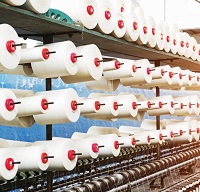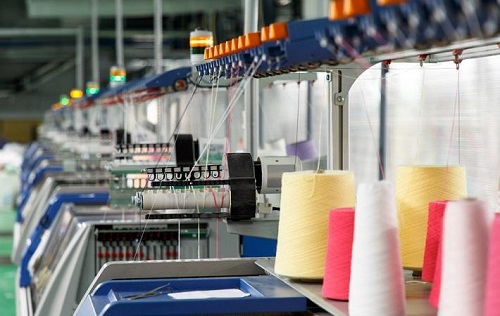 COVID-19 pandemic has infected millions of people and taken thousands of lives across the world. Indeed, the outbreak has affected the textile and apparel industry globally as well as in India. A report by Wazir Advisors ‘Impact of COVID-19 on the Indian Textiles Industry’ states, the outbreak and following three week nationwide shutdown has brought textile and apparel industry to a standstill.
COVID-19 pandemic has infected millions of people and taken thousands of lives across the world. Indeed, the outbreak has affected the textile and apparel industry globally as well as in India. A report by Wazir Advisors ‘Impact of COVID-19 on the Indian Textiles Industry’ states, the outbreak and following three week nationwide shutdown has brought textile and apparel industry to a standstill.
India’s textile and apparel industry employs migrant workers from different states and a large workforce comes from nearby rural, semi-rural areas. Due to the current situation, majority of migrant workers have returned to their native places. It would therefore, be a challenge for the government to bring these workers back to factories once the lockdown is lifted. The study then suggests certain initiatives the government could take to kick start the textiles industry.
Government initiatives to move ahead
The pandemic has hit the Indian economy at a time when growth has slowed to the lowest in a decade, investments are shrinking and a consumption recovery is sputtering. To deal with this situation, the government can take several measures with some modifications in existing schemes.
investments are shrinking and a consumption recovery is sputtering. To deal with this situation, the government can take several measures with some modifications in existing schemes.
Some of these relief measures could be:
• Clearing pending subsidies, release of dues under TUFS,
• Export subsidies (RoSCTL/MEIS), and GST refunds, on immediate basis
• Extension of soft loan equivalent to these government dues Deferment of interest charge for a period of six months on all loans
• Moratorium for repayment of principal and interest for one year Reduction in bank interest rate by 3 per cent,
• Atleast 30 per cent additional working capital at lower rates without any collateral, cllateral-free lending for loans up to Rs. 2 crore and max
• Relaxing RBI norms for declaring the defaulting unit as NPA for one year Fiscal support
• Cover all textile, garments and made-ups products under RoSCTL, IES & MEIS benefits
• Increase Interest Equalization Scheme to 5 per cent for all garments and made-ups for FY 2020-21.
• Provide 3 per cent additional ad-hoc export incentive for one year
• Exemption all raw materials, dyes & chemicals, intermediaries, spares, accessories, etc., from basic customs duty and anti-dumping duty
• Defer payment of EPF and ESI contributions for 6 months
• Extend support to the industry for payment of salaries and wages to the workers during the lockdown period.
India’s advantage
The current situation also presents an opportunity for India as it helps brands to reduce dependency on China. It also provides it with an opportunity to explore alternate options such as Bangladesh, India, Vietnam, Cambodia or any other South East Asian suppliers.
Increasing e-commerce focus
Though malls and retailers have closed their brick and mortar stores, their e-commerce channels are still operational in certain countries. These brands and retailers are now driven to incorporate digital strategy in their buying process. Online marketplaces are expected to become more popular as brands and retailers look to maximize digital options of showcasing their products and facilitating the buying and selling process.
Maximising internal capabilities
To fight the economic consequences of this pandemic, manufacturers should maximise their internal capabilities and focus on building their efficiencies. Companies should also adopt digital ways of connecting with buyers. Companies may also focus on planning for the winter or next spring summer season and target the channels of value retailing and ecommerce. Indian companies should also look out for new markets beyond US and EU like Japan, South Korea etc. and focus on diversifying both markets and products.
With depressed prices of raw materials like polyester, cotton etc. textile and apparel companies can also look at hedging raw material prices and wherever possible stock raw material which will be helpful once the market opens again. Companies could also explore emerging product categories such as medical textiles and other textile items required for healthcare facilities like hospital bedsheets, mattresses etc.











